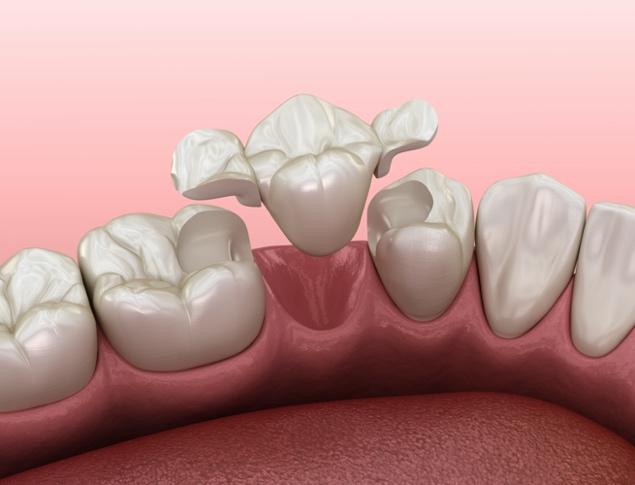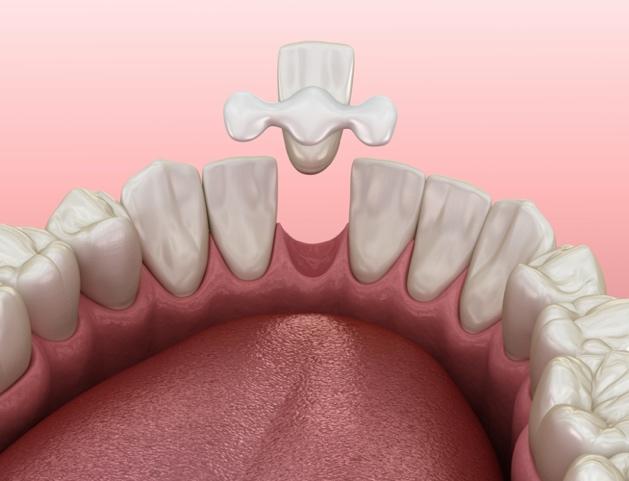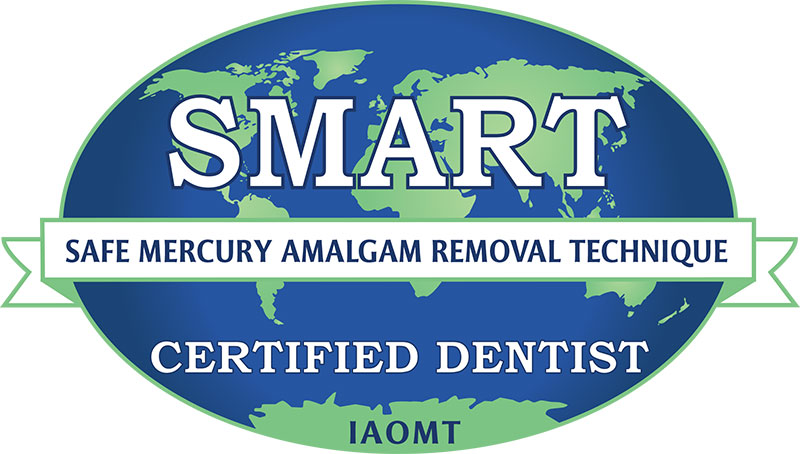What is a Maryland Dental Bridge?
Maryland bridges are a type of resin-bonded bridge, often recommended for replacing one missing tooth in the mouth. A Maryland bridge is a type of semi-permanent bridge that replaces a missing tooth.
Maryland bridges are retained by metal, Zirconia or polymer wings instead of crowns to secure this type of bridge. The bridge is anchored using a metal or porcelain framework bonded to the back of the surrounding teeth.
To bind a pontic tooth to the adjacent natural teeth, the retaining wings are bonded to the backs of the neighbouring teeth to fix your bridge in place.
It is more conservative compared to traditional bridges, as it requires minimal preparation of the adjacent teeth.
Dentists typically use Maryland bridges to replace front teeth.
These appliances aren’t strong enough to withstand the posterior chewing forces of back teeth in patients with severe grinding and clenching or excessive bite forces.


What are the Indications for Maryland bridges?
- Missing teeth due to oral trauma or congenital causes in growing patients before the placement of an implant can be planned in patients with fully grown jaws.
- Missing teeth when the patient is not a candidate for the dental implant procedure due to, e.g., medical contraindications, mental incapacity, insufficient bone volume or density, angled adjacent teeth roots, or financial limitations.
- Intact neighbour teeth
- Future complex rehabilitation cases
How is a Maryland Bridge Different from a Traditional Bridge?
As Maryland bridges require less alteration of adjacent teeth, they are more conservative. They are bonded using a framework and can be made from materials like porcelain, metal, or acrylic. Traditional bridges involve dental crowns and provide excellent strength and stability.
What are the advantages of a Maryland bridge?
- Aesthetics: They can be customized to match your teeth’ natural colour and shape, providing a seamless and natural-looking smile.
- Comfort: Typically, Maryland bridges fit comfortably without causing discomfort once bonded in place.
- Conservative approach: Unlike traditional bridges, Maryland bridges do not require extensive removal of tooth enamel. They require minimal tooth preparation and are more noninvasive and atraumatic to the neighbouring teeth supporting the bridge. This would reduce the future risk of pulp trauma and necrosis, hence the need for root canal treatment. The tooth abutments are mostly left intact, and in case of an existing filling, they can be prepared as a supporting base for the bridge
- This type of minimally invasive tooth preparation may require no anaesthesia.
- Due to its minimalist design, it causes less gum irritation and violation of the periodontal tissue.
- An ideal option for patients who are too ill or need invasive dental procedures or surgeries.
- An ideal provisional replacement option in patients who plan to undergo the implant procedure.
- Financially, an ideal alternative option for patients who can’t afford an implant.
What are the disadvantages of the Maryland bridges
- Strength: not as robust and durable as traditional bridges. Traditional bridges may be stronger than they are, particularly for areas with high biting force.
- De-bonding: The three most common complications associated with the resin-bonded prosthesis are frequent de-bonding of the wings from the retainer teeth (21%), especially in the lower posterior regions with heavy chewing forces; tooth discolouration (18%) and caries (7%).
- It is mainly indicated to replace only one missing tooth
- The metal-backing bridges may make the neighbour’s teeth look darker.
- When a metal-based false tooth (pontic) may lack adequate natural translucency and vitality.
- Although considered a more conservative alternative to traditional bridges, Maryland bridges may require adjacent teeth to remove some minimal surface enamel, especially in patients with deep bites.
What Alternatives Exist to Maryland Bridges?
Cantilever bridges are an alternative, especially when multiple adjacent teeth are missing. These bridges only require a single abutment tooth for support.
How painful is the treatment process of getting a Maryland bridge?
Generally, the process is not painful. A local anaesthetic is used during the preparation phase to ensure comfort. There might be mild sensitivity after the procedure, but this usually subsides quickly.
How Long Does it take to get used to a Maryland Bridge?
Depending on the individual bite position and chewing pattern, the position of the bridge, etc, it can take as little as two weeks for a dental bridge to feel natural.
Maryland bridges vs. conventional bridges
- Aesthetics: Both types can be customized for a natural appearance, though traditional bridges might offer slightly better aesthetics.
- Conservative Approach: Maryland bridges preserve more natural tooth structure.
- Cost: Maryland bridges are typically more cost-effective because less dental work is required.
- Strength and Stability: Traditional bridges offer greater strength and stability.
What is Zirconia Maryland bridge?
A zirconia Maryland bridge mimics the colour of natural teeth with a good performance in both interns of aesthetics and strength.
What is Preparation-free Composite Bridges?
The fibre-reinforced composite (FRC) bridge is a new method for replacing missing teeth. This conservative technique uses unidirectional glass strands/bundles to scaffold the composite pontic bonded to the adjacent abutment teeth.
What are the Advantages of fibre-reinforced composite (FRC) bridges?
- Minimally invasive, reversible, and non-destructive to the healthy enamel and dentin
- Can be used for temporary, medium-term and long-term solutions.
- Aesthetically natural and pleasing
- Cost-effective way to restore missing tooth
- Can be constructed based on the direct technique in one session when a direct technique is performed
- Easily repaired in one session in case of fracture.
- Simple and quick; Ideal option for elderly patients.
- Have the interpenetrating polymer network (IPN) with excellent bonding to composite materials, adhesives and resin types of cement.
- High performance with a reported success rate of ca. 95.2% after six years of service.
What are the success rates for the Maryland bridges?
- Maryland bridges are considered permanent but may not last a lifetime.
- The clinical data reveals that Maryland bridges have been a successful treatment option as a transitional and permanent prosthesis for over three decades.
- Several studies indicate that anterior bridges tend to have a better performance than posterior bridges.
- The overall survival rate has been suggested to be around 77% after ten years of service.
- An estimated 5-year success rate of Maryland bridges is ca. 88.18% with metal framework and 84.41% with nonmetal framework.
- The success rate for zirconia materials is ca. 92.07%.
- The success rate of Maryland bridges with In-Ceram alumina is 94.26%.
- The success rate of Maryland bridges with Fibre-Reinforced Composite is 84.83%.

